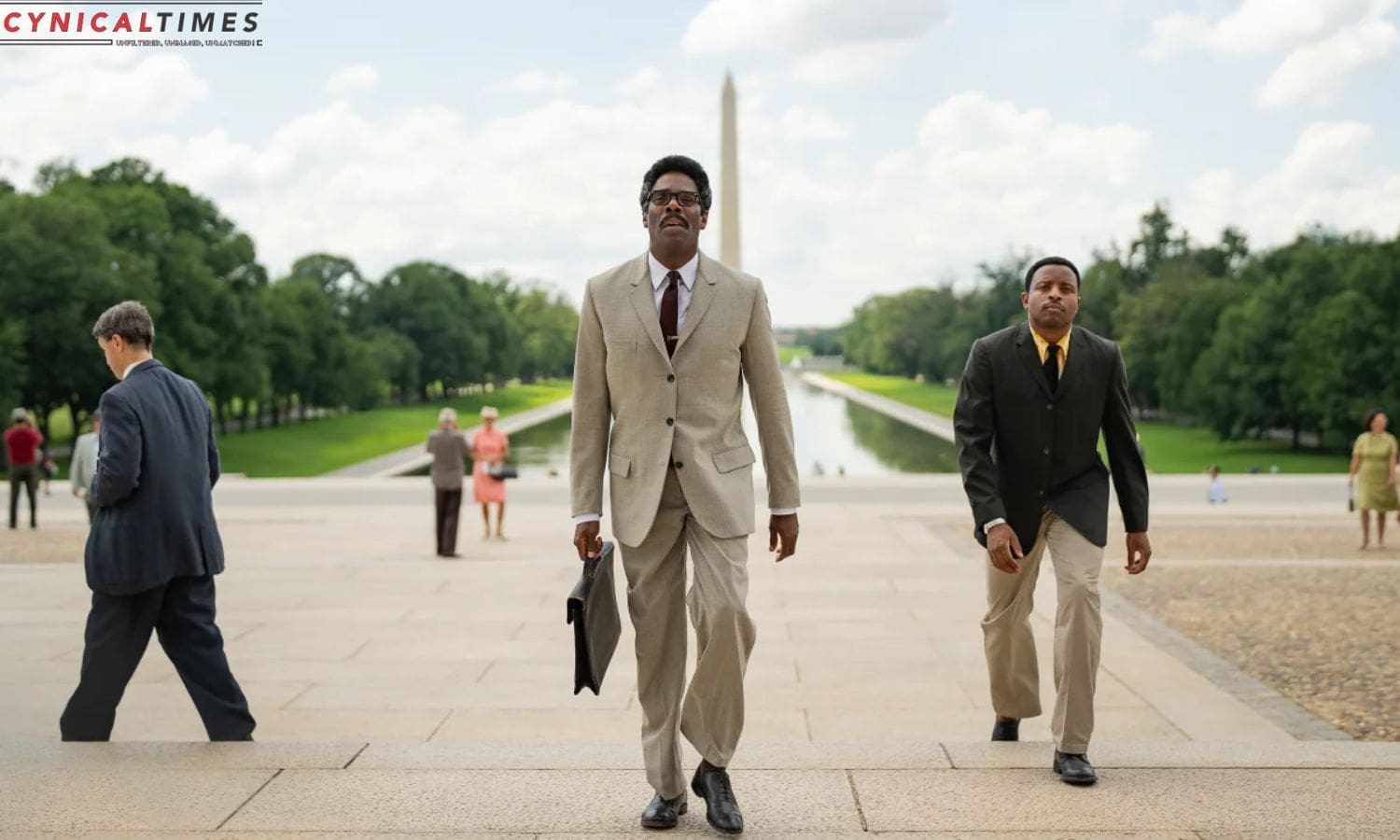Rustin Resilience: In “Rustin,” the spotlight turns to Bayard Rustin, a key figure in the civil-rights movement whose contributions were often overlooked. The film, despite its impressive cast and production team, falls short of capturing the full inspirational essence of Rustin’s life. Colman Domingo’s remarkable performance brings Rustin’s character to life, portraying the challenges he faced as an openly gay Black man during a tumultuous era. The narrative touches on personal distractions, such as Rustin’s complex relationship with a married pastor, but this subplot feels somewhat detached from the central focus on the March on Washington.
The film attempts to unravel the complexities of Rustin’s dismissal by history, highlighting both his sexual orientation and political maneuvering within the movement. Skepticism from figures like congressman Adam Clayton Powell Jr. and the pressure to organize an impactful event adds layers to Rustin’s story. Domingo effectively portrays Rustin’s commitment to the cause and his partnership with Martin Luther King Jr., showcasing a man who, despite occupying a background role in public perception, remains steadfast in his convictions.
Despite the impressive pedigree, with acclaimed director George C. Wolfe and the involvement of Barack and Michelle Obama, “Rustin” falls short of creating truly memorable moments. While it successfully provides historical recognition to a figure who was largely denied it in his lifetime, the film tends to follow a somewhat formulaic approach, lacking the emotional resonance one might expect from such a significant historical figure. In the end, “Rustin” emerges as a commendable historical account but struggles to elevate itself to the dramatic heights befitting its subject.
Also Read: South Bay Winter Wonderland: Downtown Ice Returns, Sparking Holiday Joy
Our Reader’s Queries
What was Bayard Rustin remembered for?
Rustin played a significant role in the African American Civil Rights Movement by organizing the 1963 March on Washington for Jobs and Freedom. This march, which is now famously linked with Martin Luther King’s “I Have a Dream” speech, was instrumental in laying the groundwork for the 1964 Civil Rights Act. Rustin’s contribution to this historic event cannot be overstated.
What qualities did Bayard Rustin have?
Despite being highly valued for his skills as an organizer, planner, and leader by prominent figures in the Civil Rights Movement, Rustin was unfortunately relegated to the background during this pivotal time in history.
Did Rustin leave the Communist Party?
Rustin was initially attracted to the Communists’ dedication to racial equality. However, he parted ways with the organization in 1941 when they began to focus less on civil rights activism.
Who was the black leader Rustin?
Between 1965 and 1979, Rustin held the position of the head of the A. Philip Randolph Institute, which was the African American constituency group of the AFL-CIO. He worked alongside A. Philip Randolph until his death in 1979, with the aim of integrating unions and encouraging African Americans to join unions.

